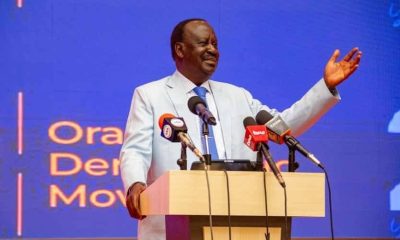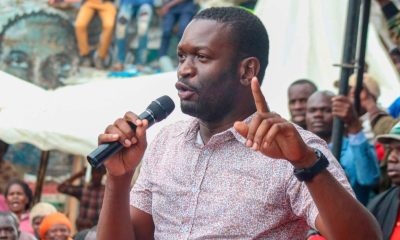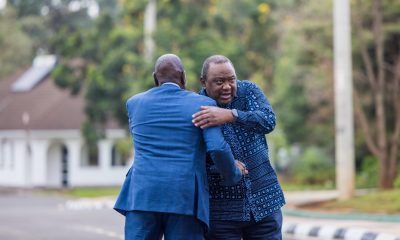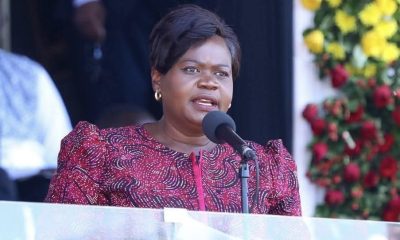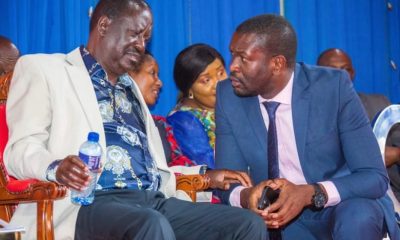Politics
Don’t Be Surprised: Prof. Kagwanja Explains Why Ruto and Gachagua Could Reconcile Before 2027
The analyst predicted that “in 2027, we are likely to see Gachagua and Ruto come together based on national equality, while Raila will be marginalised”.
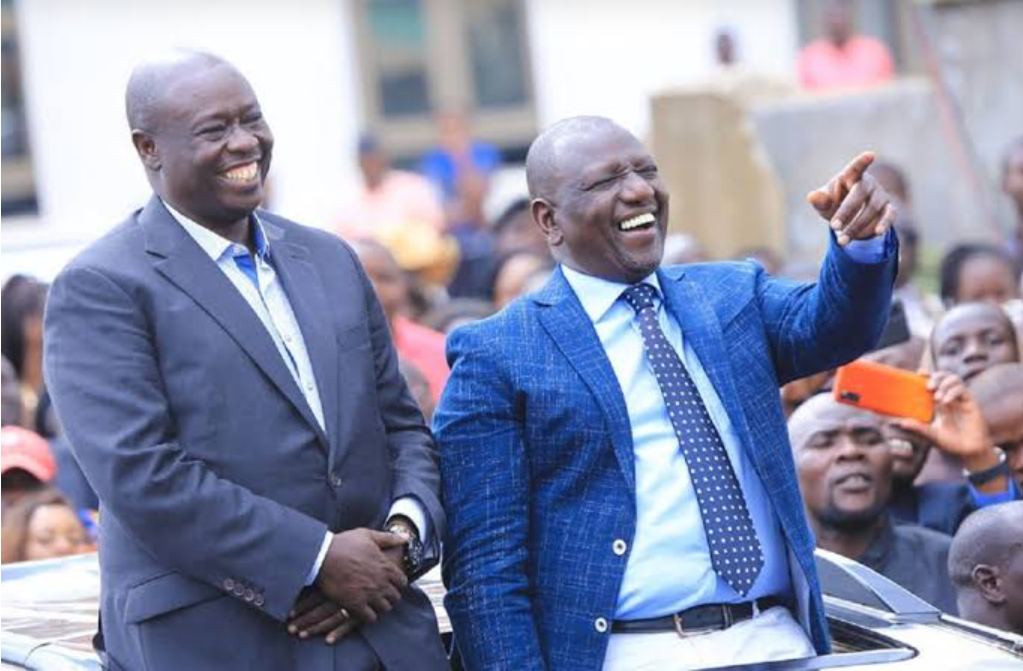
A Political Analysis of Kenya’s Evolving Power Dynamics
In the complex chess game of Kenyan politics, few predictions carry as much weight as those from seasoned political analyst Professor Peter Kagwanja.
His latest forecast that President William Ruto and impeached former Deputy President Rigathi Gachagua will likely “shake hands” before the 2027 elections has sent ripples through the country’s political landscape.
Speaking to a local television station on July 29, 2025, Kagwanja laid out a compelling case rooted in electoral mathematics rather than emotional reconciliation.
His central thesis is straightforward: President Ruto knows very well that he cannot win without numbers and needs the support of the Mount Kenya region.
This assessment reflects the harsh realities of Kenya’s demographic-driven politics.
Mount Kenya remains a hotly contested region that could determine the outcome of the 2027 elections, with both leaders devising parallel strategies to secure its support.
The region’s voting bloc has historically been decisive in determining presidential outcomes, making any serious contender’s path to State House nearly impossible without its backing.
Gachagua’s rising political stock
Perhaps most significantly, Kagwanja highlighted how “the anger in Mount Kenya over betrayal is what will shape the 2027 election,” with Gachagua and his allies positioned to “emerge as a major political bloc”. This assessment gains credence when viewed against recent political developments.
The Mount Kenya region, which has traditionally supported Gachagua, has turned against those who voted for his impeachment, creating a political nightmare for Ruto’s allies in the region.
Gachagua had previously given area politicians until December to align with the region’s political sentiments or risk being swept to oblivion in 2027.
Kagwanja’s most intriguing prediction centers on the mechanics of this potential reconciliation.
He suggests that “a coalition between Gachagua and Ruto is possible, even if UDA loses its grip on the region,” potentially featuring “Gachagua, who is not a member of UDA and Ruto, who will have only a small UDA faction remaining in Mount Kenya, where the party has been largely liquidated”.
This scenario reflects the fluid nature of Kenyan political alliances, where ideological differences often take a backseat to pragmatic electoral calculations.
The proposed handshake would be “based on the idea of national equality, not just party loyalty”, suggesting a broader political realignment beyond traditional party structures.
Raila’s potential marginalization
In Kagwanja’s projection, veteran opposition leader Raila Odinga emerges as the potential casualty of this realignment.
The analyst predicted that “in 2027, we are likely to see Gachagua and Ruto come together based on national equality, while Raila will be marginalised”.
This assessment comes against the backdrop of a third force forming away from both Ruto and Gachagua, with youthful elected leaders claiming it’s time to liberate Kenya from ethnic politics.
However, Kagwanja’s analysis suggests that ethnic and regional calculations will continue to dominate Kenya’s political landscape.
The prediction gains context from recent developments in Mount Kenya politics.
Gachagua has positioned himself as the region’s defender, making seven resolutions for Mount Kenya in his showdown with President Ruto and telling the President to “forget Mt Kenya support in 2027”.
However, some Mount Kenya leaders like MP Kiunjuri argue that the region should “cease rebellion without a cause and join hands with President Ruto”, indicating that the region’s political direction remains contested.
Kagwanja’s analysis reflects Kenya’s persistent challenge of balancing ethnic considerations with national unity aspirations.
The politics of betrayal continue to fuel the Ruto-Gachagua feud, with both sides positioning for 2027.
The professor’s prediction essentially argues that political survival will trump personal grievances. In a system where electoral success depends heavily on regional coalitions, the mathematical reality of Mount Kenya’s voting power could force even the most bitter political enemies to find common ground.
Whether Kagwanja’s prediction materializes remains to be seen.
What remains clear is that Kagwanja has urged Kenyans to “watch the evolving political landscape closely, noting that the realignments are far from over”.
If his analysis proves accurate, Kenya could witness one of the most dramatic political reconciliations in its recent history—driven not by forgiveness, but by the unforgiving arithmetic of electoral politics.
The coming months will test whether pragmatism indeed trumps pride in Kenya’s high-stakes political theater, as the country inches closer to what promises to be a highly contested 2027 general election.
Kenya Insights allows guest blogging, if you want to be published on Kenya’s most authoritative and accurate blog, have an expose, news TIPS, story angles, human interest stories, drop us an email on [email protected] or via Telegram
-

 News1 week ago
News1 week agoKenyan Driver Hospitalized After Dubai Assault for Rejecting Gay Advances, Passport Seized as Authorities Remain Silent
-

 Investigations4 days ago
Investigations4 days agoMoney Bior, Lawyer Stephen Ndeda Among 18 Accused Of Running An International Fraud Ring Involved With Scamming American Investor Sh500 Million
-
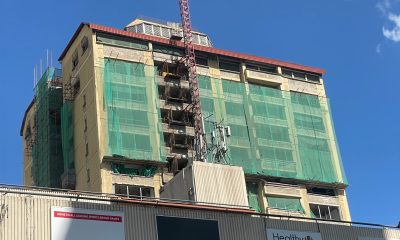
 Business1 week ago
Business1 week agoConstruction Of Stalled Yaya Center Block Resumes After More Than 3 Decades and The Concrete Story Behind It
-

 Investigations2 days ago
Investigations2 days agoNestlé Accused of Risking Babies’ Health in Africa with ‘Toxic’ Cerelac Product Sold Highest in Kenya
-
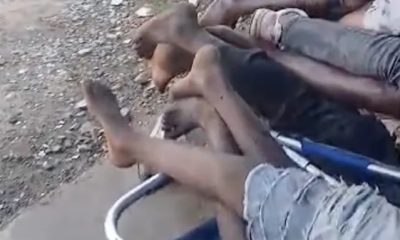
 Investigations2 weeks ago
Investigations2 weeks agoCNN Reveals Massive Killings, Secret Graves In Tanzania and Coverup By the Govt
-
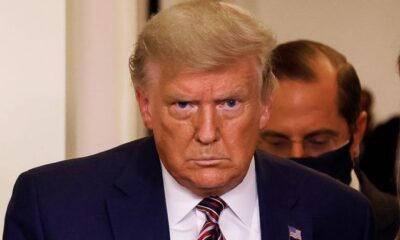
 Investigations1 week ago
Investigations1 week agoHow Somali Money From Minnesota Fraud Ended In Funding Nairobi Real Estate Boom, Al Shabaab Attracting Trump’s Wrath
-
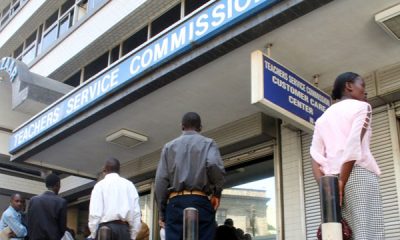
 News6 days ago
News6 days agoTSC Announces Major Policy Shift To End Transfer Of Promoted Teachers
-

 Politics2 weeks ago
Politics2 weeks agoI Had Warned Raila Of Possible Fallout In The Odinga Family After His Death, Oburu Says




